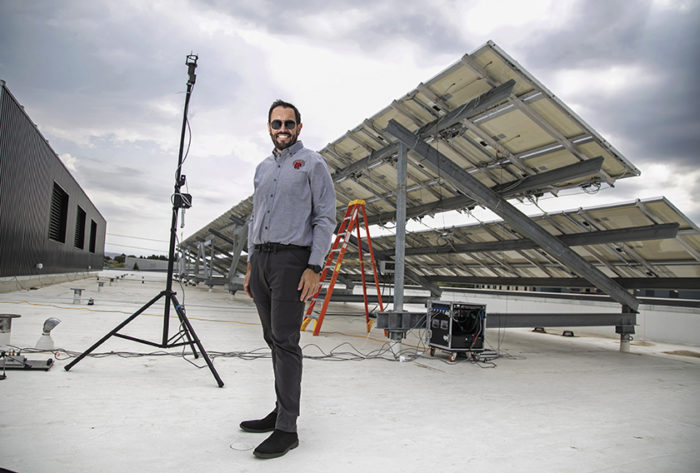Imagine installing an enormous array of solar panels on the roof of a building, only to watch them blow away in a windstorm.
National building codes don’t include enough specific criteria for attaching energy-generating equipment to low-rise buildings. But Central’s Greg Lyman, chair of the Engineering Technologies, Safety, and Construction Department, aims to change that. In 2017, he and his collaborators received a $350,000 National Science Foundation grant to create a physics-based strategy for predicting how high winds affect these systems.

In 2019, Lyman and a team of CWU students installed a fleet of sensors onto solar panels on the roof of Hogue Hall. Whenever the Ellensburg winds blew over the past four years, the sensors logged data about vibrations, air pressure, how much strain the wind put on the equipment, and more.
The students helped Lyman program, build, and troubleshoot the system. For example, when the team wanted to measure how wind flowed across the roof, students modeled and 3D-printed a sensor.
“They did a lot of real-world, applicable engineering,” Lyman said. “It was literally that: design, build, and test actual sensors and data acquisition systems for a complex engineering project.”
He sent the data to Florida International University, where researchers built a full-scale model of the system in a wind tunnel, and to the University of Washington, where a team helped with analysis.
Now, Lyman and his collaborators are preparing to publish the results, with the students as co-authors.
“If we focus on student success, while we as faculty are performing our research, it’s a great opportunity to get students involved,” he said.






comments powered by Disqus